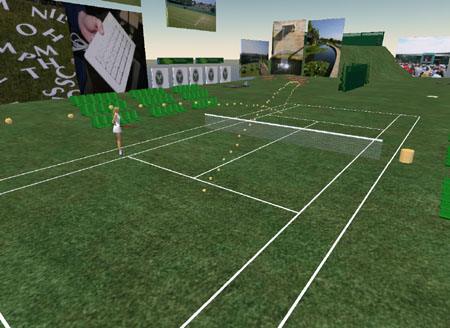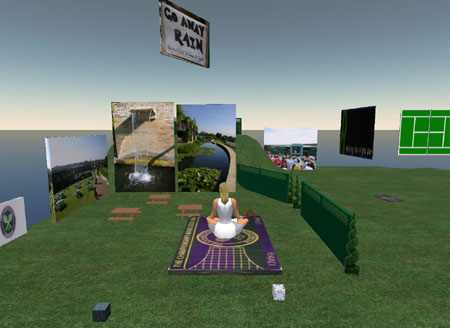When talking about Virtual Worlds with customers and other IBMers, I often start with some examples of the state of the art in Second Life. They give a flavour of why integration between the metaverse and real life is both possible and important, and why people are paying attention. I usually find it helpful to put Second Life in the context of Web 2.0; pointing out that it’s really all about two concepts that have already been changing the shape of the web: user generated content and social networking.
I reasoned that I could save everyone some time by putting the highlights of my introductory presentation up here. This is not intended to be a comprehensive list of projects, rather a taste of what has caught my attention (and that of the media) in the last few months.
Introduction
Depending on the audience, I will usually start by visiting the Second Life website to show the interactive map, all the time reeling off some interesting stats – largely gleened from Google TechTalk video – to help
people realise this is not just a game:
- A glance at secondlife.com shows us the number of residents, how many residents have logged on recently, and how many US$ changed hands between players in the last 24 hours.
- Yes, people make and sell things for money. 25% of users are currently sellers, 75% are primarily consumers.
- Easy to build and script (using Linden Scripting Language but moving to support Mono).
- Rich scripting API includes support for email, XML-RPC, HTTP Request, …
- Video and audio streaming are easy. Mozilla’s Gekko core (Firefox’s rendering engine) is eventually being integrated, so any surface will be able to be a web page.
- It’s growing fast. According to Linden Labs, the rate at which new land is added exceeds how fast you could explore it.
BBC One Big Weekend event
- The BBC, who are frequently early adopters, announced an event in Second Life in May 2006. The streaming video from the One Big Weekend event (being held in Dundee) was shown in-world to provide people with another means of following the action.

- The key thing here is the party happening in the foreground. People are dancing, showing off and chatting.

- More: Read about BBC Radio 1 ‘One Big Weekend’ island on BBC Online, and the announcement.
Eggy Lippmann collaborated with Rivers Run Red on this one.
- The BBC also did a Second Life session for Newsnight around January 2006.
American Apparel
Warner Brothers
- Warner Bros, who promote Regina Spektor, are marketing her latest album within Second Life.

- The New York loft apartment (also built by Aimee Weber) houses a tape recorder playing clips of Regina Spektor’s music, with the mood of the room changing with the music.

- More: read the press release and creator’s blog.
Baseball
- Major League Baseball (MLB.com) paid the Electric Sheep Company for a virtual baseball stadium to host the Home Run Derby event.

- I’m not a baseball fan, but even I was hooked enough by the lively atmosphere that staying up until 2am UK time was well worth it.

- More: Eric Rice has a great summary and Ian wrote up the event on Eightbar too.
Forbidden City
Amazon
Wimbledon
- Eightbar readers can’t have missed the fact that Ian Hughes worked on a prototype build for the Wimbledon tennis championships.

- It involved displaying the path of the ball (thanks to the ‘Hawkeye’ data captured on-court) as well as clothing and even flying towels.

- Read the original Eightbar post on Wimbledon demo for more.
So there you go. Naturally, this list will be out of date almost instantly, as more things are happening all the time. Let me know if I’ve missed something important though.

























